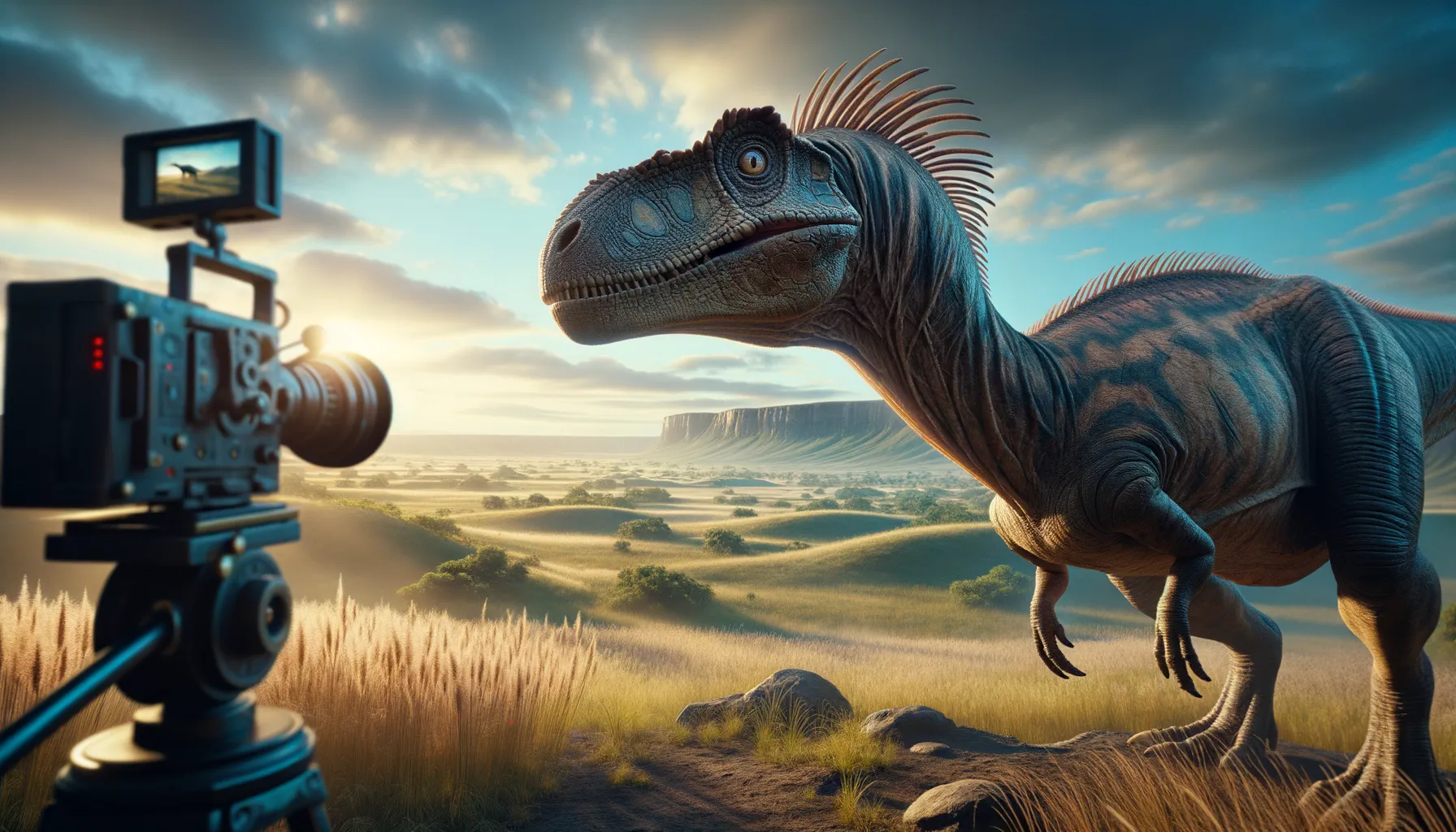
Prosaurolophus
The crested pioneer of ancient grasslands.
Period
Cretaceous
Length
Up to 9 meters long.
Height
Approximately 2 meters tall at the hips.
Weight
About 2.5 tons.
Prosaurolophus was a herbivorous dinosaur known for its distinctive cranial crest. It roamed the lush plains of North America during the Late Cretaceous period. Its fossilized remains provide insight into the rich ecosystems of that era. As a member of the hadrosaurid family, it was a precursor to the more famous Parasaurolophus, sharing similar features and adaptations for its environment.
Diet
Prosaurolophus was herbivorous, primarily feeding on plants, leaves, and possible twigs. Its teeth were well-suited for grinding tough plant matter found in its diverse habitat.
Hunting
Being a herbivore, Prosaurolophus did not hunt other animals. It would have spent its time foraging for plant material, likely moving in groups to avoid predators.
Environmental challenges
Prosaurolophus faced environmental challenges such as seasonal climate changes, which may have affected the availability of food. It lived in a time when the Earth experienced significant volcanic activity and shifting landscapes. Predation from large theropods would have also been a constant threat, requiring constant vigilance and likely influencing its herd behavior.
Speed
Moderate, not built for speed.
Lifespan
Estimates suggest around 20-30 years.
First discovery
First discovered in Alberta, Canada in 1916.
Fun Facts
- Prosaurolophus was a duck-billed dinosaur that lived around 75 million years ago during the late Cretaceous period.
- It was a herbivore, meaning it primarily ate plants and likely used its broad, flat beak to strip leaves from trees and shrubs.
- Prosaurolophus had a small crest on its head, which may have been used for social displays or communication with other dinosaurs.
- Fossils of Prosaurolophus have been found in North America, particularly in areas that are now part of Canada and the United States.
- An adult Prosaurolophus could grow up to 28 feet long, which is about the length of two cars lined up end to end.
- Its name means 'before Saurolophus,' which implies that it was an earlier relative of the Saurolophus dinosaur.
- Prosaurolophus traveled in herds, which provided protection from predators and helped them find food more effectively.
Growth and Development
Prosaurolophus likely grew rapidly during its early years to avoid becoming prey for larger predators. Juvenile mortality would have been high, with only the strong surviving to maturity. As it aged, it would have developed a characteristic crest, which might have been used for social signaling or thermoregulation.
Habitat
This dinosaur inhabited the floodplains and forested regions of North America during the Late Cretaceous. Its environment was rich with a variety of plant life, providing ample food sources. Seasonal floods would have shaped its landscape, creating dynamic and sometimes challenging living conditions.
Interaction with other species
Prosaurolophus likely coexisted with a variety of other dinosaur species, including predators like tyrannosaurs. It may have engaged in social herding behaviors, both for protection and routine migration. Interaction with other herbivores would have been competitive, sharing the same plant resources.
Natural lifespan
Its natural lifespan was likely around 20 to 30 years.
Reproduction
Prosaurolophus likely laid eggs in nests, similar to modern birds and other dinosaurs. Parental care might have been present, with adults protecting nesting sites from predators. Fossilized eggshells suggest that hatchlings were altricial, needing care after birth.
Social behaviour
Prosaurolophus may have lived in herds, which provided protection from predators and assisted in social learning. Communication within herds might have been aided by vocal calls, possibly enhanced by their crest.
Fossil locations
Fossil remains of Prosaurolophus have predominantly been found in the Dinosaur Park Formation in Alberta, Canada and in regions of Montana, USA. These discoveries help paleontologists understand the distribution and behavioral ecology of hadrosaurids.
